|
Books Should Be Free Loyal Books Free Public Domain Audiobooks & eBook Downloads |
|
|
Books Should Be Free Loyal Books Free Public Domain Audiobooks & eBook Downloads |
|
Top Authors |
|---|
|
Book type:
Sort by:
|
By: Elizabeth Gaskell (1810-1865) | |
|---|---|
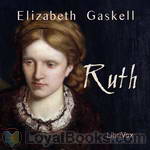 Ruth
Ruth
The book is a social novel, dealing with Victorian views about sin and illegitimacy. It is a surprisingly compassionate portrayal of a ‘fallen woman’, a type of person normally outcast from respectable society. The title of the novel refers to the main character Ruth Hilton, an orphaned young seamstress who is seduced and then abandoned by gentleman Henry Bellingham. Ruth, pregnant and alone, is taken in by a minister and his sister. They conceal her single status under the pretence of widowhood in order to protect her child from the social stigma of illegitimacy... | |
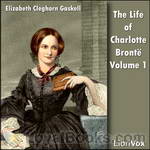 The Life Of Charlotte Brontë
The Life Of Charlotte Brontë
Charlotte Brontë was a British author, the eldest of the three famous Brontë sisters who have become standards of English literature. She is best known for her novel Jane Eyre, one of the greatest classics of all time. Just two years after Charlotte’s death, her friend Elizabeth Gaskell wrote her biography. Want to know more about Charlotte Brontë? If you do, please read this biography. | |
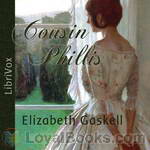 Cousin Phillis
Cousin Phillis
Cousin Phillis (1864) is a novel by Elizabeth Gaskell about Paul Manning, a youth of seventeen who moves to the country and befriends his mother's family and his second cousin Phillis Holman, who is confused by her own placement at the edge of adolescence. Most critics agree that Cousin Phillis is Gaskell's crowning achievement in the short novel. The story is uncomplicated; its virtues are in the manner of its development and telling. | |
By: Walter Besant (1836-1901) | |
|---|---|
 Stories of Successful Marriages
Stories of Successful Marriages
A collection of short stories by celebrated authors on the subject of successful marriages. Pieces originally appeared in other publications between 1858 and 1900 and were brought together by Walter Besant. | |
By: Elizabeth Gaskell (1810-1865) | |
|---|---|
 The Grey Woman and other Tales
The Grey Woman and other Tales
| |
 My Lady Ludlow
My Lady Ludlow
This novella by the acclaimed Elizabeth Gaskell follows the reminiscences and life of aristocratic Lady Ludlow, told through the eyes of one of her charges, the young Margaret Dawson. Lady Ludlow epitomizes the unwillingness of the old English gentry to accept the progression of social reform and technology, such as education for the poor and religious leniency. She reminisces about her friends in the French revolution and tries to protect and guide the numerous young ladies she has taken under her care. | |
 Dark Night's Work
Dark Night's Work
Love, murder and class commentary in Mrs Gaskell's usual brilliant style! This novel was originally serialised and published by Charles Dickens, with whom Mrs Gaskell had several disagreements. She chose to avoid melodrama and concentrate on psychological realism to produce a moving story of people meeting and parting across class divides. | |
 Doom of the Griffiths
Doom of the Griffiths
| |
 Moorland Cottage
Moorland Cottage
"Maggie Brown is torn between her mother who constantly tells her to live for her selfish brother (to whom she gives all her love) to her wish to marry Frank and live for herself. Maggie's plight for independence shows the change in women's role, which started to take place during that time. But it also keeps to the tradition of an almost Cinderella story: the pure woman does the best for everyone but herself and is rewarded for that. In addition, this is a very interesting story, written in Gaskell's remarkable style. When you read it, you are transported to another time, and place". | |
 Lizzie Leigh
Lizzie Leigh
| |
 Round the Sofa
Round the Sofa
| |
 Half a Life-Time Ago
Half a Life-Time Ago
| |
 An Accursed Race
An Accursed Race
| |
 The Poor Clare
The Poor Clare
| |
 The Half-Brothers
The Half-Brothers
| |
By: Gaston Leroux (1868-1927) | |
|---|---|
 The Mystery of the Yellow Room
The Mystery of the Yellow Room
One of the first locked room mysteries, The Mystery of the Yellow Room focuses on a supposedly impossible crime which has been committed within a locked room. The novel was initially published in the French periodical L’illustration, and was later published as a book in 1908. It is the first of a series of novels featuring the famous fictional reporter Joseph Rouletabille. The mystery begins when Joseph Rouletabille, a reporter and amateur sleuth is sent to investigate a crime scene at the Château du Glandier, home to renowned chemist Joseph Stangerson... | |
 The Phantom of the Opera
The Phantom of the Opera
A masterly mix of romance, drama, mystery, suspense, love and jealousy, The Phantom of the Opera by Gaston Leroux will haunt you long after you've turned the last page. Today the world knows it by Andrew Lloyd-Webber's long running musical on stage and its 2004 film adaptation, and earlier from Lon Chaney's screen portrayal of the dark intruder who roams the Paris Opera House. However, Gaston Leroux's novel was first released as a serial in the French magazine, La Gaulois over four months in 1909-10... | |
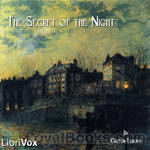 The Secret of the Night
The Secret of the Night
Gaston Leroux, perhaps best known as the author of The Phantom of the Opera in its novel form, was also the author of a popular series of mystery novels featuring a young journalist cum detective named Joseph Rouletabille. It is most likely that Leroux styled his hero after himself. Rouletabille was in the tradition of other great detectives who solved their cases by pure deductive reasoning. Much as Sherlock Holmes, who eliminated the impossible and concluded that whatever remained, however improbable must be the truth, Rouletabille included the known facts about the case and eliminated everything that was not a known fact, no matter how much it appeared to relate to the case... | |
By: Edith Wharton (1862-1937) | |
|---|---|
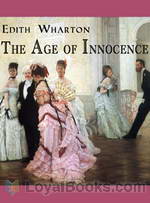 The Age of Innocence
The Age of Innocence
If you've watched and loved Winona Ryder playing the innocent May Welland in the 1993 film adaptation of Edith Wharton's sweeping novel about class-consciousness in nineteenth century America, you will certainly enjoy reading the original. Though Martin Scorcese's brilliant work was certainly true to the spirit of the original novel, no film can reproduce the charm of language and turn of phrase employed by one of America's greatest writers. The Age of Innocence was Edith Wharton's 12th novel and is located in familiar Wharton territory... | |
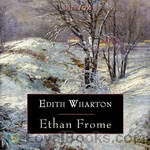 Ethan Frome
Ethan Frome
Ethan Frome is a novel published in 1911 by the Pulitzer Prize-winning American author Edith Wharton. It is set in the fictitious town of Starkfield, Massachusetts, New England, where an unnamed narrator tells the story of his encounter with Ethan Frome, a man with dreams and desires that end in an ironic turn of events. ( | |
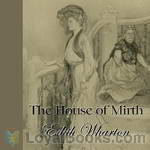 The House of Mirth
The House of Mirth
Wharton's classic story of an aging (by Victorian-era standards) spinster socialite who would rather marry for money than for true love. | |
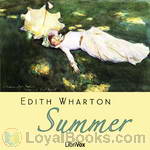 Summer
Summer
Wharton's 1917 novella Summer, like her more famous work Ethan Frome, is set in a very small rural New England town. Charity Royall longs to escape the claustrophobic confines of North Dormer and the inappropriate advances of her guardian Mr. Royall, who adopted her as a child from the nearby Mountain community. Hope arrives in the form of city boy Lucius Harney, who has come to research the architecture of the region; but will his presence in Charity's life mean her salvation - or her undoing? (Introduction by Elizabeth Klett) | |
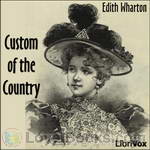 Custom of the Country
Custom of the Country
Edith Wharton was a novelist of manners of late 19th Century New York “Society”, who spent much of her life in France. In this novel she tells the story of Undine Sprague, the thrice- (or more) married, upwardly mobile beauty from “Apex City”, transplanted to New York, and finally to France, leaving the dead and wounded in the wake of her “experiments in happiness”. | |
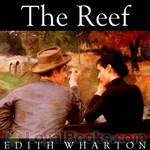 The Reef
The Reef
George Darrow, Anna Leath’s first love, is finally coming from London to propose to her. However, he drifts to an affair with Sophy Viner, Anna’s daughter’s naïve and young governess. Sophy’s relationship with Darrow and Anna’s family can threaten his success. In this novel, as in many of Wharton’s other well known novels, we see the eternal love triangle. With her sly and lovely writing style, Wharton delivers to us in this wonderful novel a cast of unforgettable characters and many unforgettable scenes which we can vividly imagine. What would Darrow choose: success or love? Would Anna marry him despite his affair with Sophy? (Summary by Stav Nisser.) | |
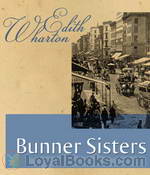 Bunner Sisters
Bunner Sisters
“Bunner Sisters,” like “The Age of Innocence” is set in 1870s New York, however the lives of Ann Eliza and Evelina Bunner reflect impoverished New York. The sisters run a “very small shop, in a shabby basement, in a sidestreet already doomed to decline.” Shabby as it is, the sisters are happy in their small orderly community of supportive women. The story tells of the destruction of this life, and how the once content sisters are thrown into the realistic world outside of their little shop. | |
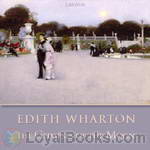 The Glimpses of the Moon
The Glimpses of the Moon
"The Glimpses of the Moon" (1922) is about Nick and Susy Lansing, both of whom live a decadent life in Europe by sponging off wealthy friends. They marry out of convenience and have an "open" relationship, but are unprepared for where their feelings will take them. | |
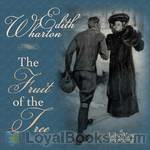 The Fruit of the Tree
The Fruit of the Tree
When published in 1907, this novel about the lives of a wealthy mill owner, her socially progressive husband and friends caused a stir due to its treatment of drug abuse, mercy killing, divorce and second marriages. | |
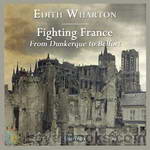 Fighting France, from Dunkerque to Belfort
Fighting France, from Dunkerque to Belfort
American novelist Edith Wharton was living in Paris when World War I broke out in 1914. She obtained permission to visit sites behind the lines, including hospitals, ravaged villages, and trenches. Fighting France records her travels along the front in 1914 and 1915, and celebrates the indomitable spirit of the French people. | |
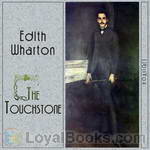 The Touchstone
The Touchstone
Stephen Glennard's career is falling apart and he desperately needs money so that he may marry his beautiful fiancee. He happens upon an advertisement in a London magazine promising the prospect of financial gain. Glennard was once pursued by Margaret Aubyn, a famous and recently deceased author, and he still has her passionate love letters to him. Glennard removes his name from the letters and sells them, making him a fortune and building a marriage based on the betrayal of another. | |
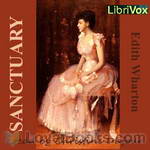 Sanctuary
Sanctuary
Kate Orme, shocked by the discovery of her fiance's complicity in a tragedy, and by society's willingness to overlook such transgressions, nevertheless marries him. Years later, her son faces a moral crisis similar to the one that showed her his father's moral weakness. (Introduction by Christine Dufour) | |
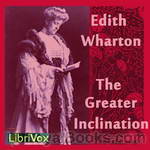 The Greater Inclination
The Greater Inclination
This is Edith Wharton's earliest published collection of short stories (1899). Like much of her later work, they touch on themes of marriage, male/female relationships, New York society, and the nature and purpose of art. One of the stories, "The Twilight of the God," is written as a short play. The role of Warland is read by mb, and the role of Oberville by Bruce Pirie. | |
 Crucial Instances
Crucial Instances
This is Edith Wharton's second published collection of short stories (1901). One of these seven stories, "Copy: A Dialogue," is written as a short play. The role of Hilda is read by Arielle Lipshaw, and the role of Ventnor by Mark F. Smith. | |
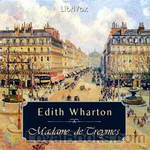 Madame de Treymes
Madame de Treymes
Edith Wharton's 1907 novella explores the milieu of Americans living abroad in Paris. New Yorker John Durham travels to Paris to woo an old flame, Fanny Frisbee, now the Marquis de Malrive. Fanny is separated from her husband and wants to marry John and return to America, but she doubts whether her Catholic husband will grant her a divorce. When John meets Fanny's sister-in-law, the enigmatic Madame de Treymes, he hopes she may be able to help them in their quest for happiness. (Introduction by Elizabeth Klett) | |
 In Morocco
In Morocco
| |
 The Early Short Fiction of Edith Wharton — Part 1
The Early Short Fiction of Edith Wharton — Part 1
| |
 Tales of Men and Ghosts
Tales of Men and Ghosts
Tales of Men and Ghosts was published as a collection in 1910, though the first eight of the stories had earlier appeared in Scribner's and the last two in the Century Magazine. Despite the title, the men outnumber the ghosts, since only "The Eyes" and "Afterward" actually call on the supernatural. In only two of the stories are women the central characters, though elsewhere they play important roles. Wharton enjoys subjecting her subjects -- all of them American gentlemen and gentlewomen, in the conventional senses of the word -- to various moral tests and sometimes ironic tests... | |
 The Descent of Man and Other Stories
The Descent of Man and Other Stories
| |
 Xingu 1916
Xingu 1916
| |
 The Hermit and the Wild Woman
The Hermit and the Wild Woman
| |
 Coming Home 1916
Coming Home 1916
| |
 The Triumph Of Night 1916
The Triumph Of Night 1916
| |
 The Choice 1916
The Choice 1916
| |
 Kerfol 1916
Kerfol 1916
| |
 Autres Temps... 1916
Autres Temps... 1916
| |
 Artemis to Actaeon, and Other Verses
Artemis to Actaeon, and Other Verses
| |
By: Edgar Allan Poe (1809-1849) | |
|---|---|
 The Raven
The Raven
When a modern film script draws inspiration from a poem written more than a century ago, readers can judge its impact on our collective imagination. Such is the resonance of the poem "The Raven" by Edgar Allan Poe. First published in 1845, "The Raven" is a masterpiece of atmosphere, rhythmic quality and use of language. Constructed in narrative form, it tells the story of a young man who is mourning the loss of his beloved. One December night as he wearily sits up browsing through a classical volume, a mysterious tapping against his window disturbs him... | |
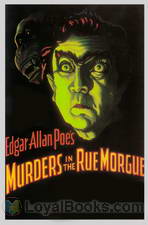 The Murders in the Rue Morgue
The Murders in the Rue Morgue
This story opens with a mother and daughter found brutally murdered inside a locked room in an upstairs apartment on a street in Paris. The police are baffled by both the ferocity of the crime and the lack of clues. Neighbors give conflicting evidence. Two friends are intrigued by the entire situation as reported in the newspapers. They decide to do a little investigating on their own. What they come up with is one of the most shocking and strangest of conclusions. The Murders in the Rue Morgue by Edgar Allan Poe is perhaps the first modern detective tale, though similar stories by Voltaire and ETA Hoffman did appear a few decades earlier... | |
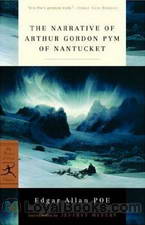 Narrative of Arthur Gordon Pym
Narrative of Arthur Gordon Pym
Published in 1838, The Narrative of Arthur Gordon Pym of Nantucket is Poe’s only complete novel and concentrates on several sea adventures gone awry. The novel follows Arthur Gordon Pym, who finds himself in the center of gloomy occurrences on board numerous vessels, as his anticipated sea adventure takes a drastic shift in the wind. Shipwreck, starvation, mutiny, near death experiences and cannibalism are just some of the issues endured in the gripping, and at times gruesome novel. The adventure... | |
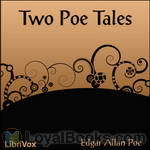 Two Poe Tales
Two Poe Tales
Edgar Allan Poe is best known for his famous short horror stories; however, horror is not the only genre in which he wrote. How To Write a Blackwood Article and its companion piece A Predicament are satirical works exploring the pieces of the formula generally seen in short horror stories (”articles”) found in the Scottish periodical “Blackwood’s Magazine” and the successful misapplication of said formula by – horrors! – a woman author! – respectively. | |
 The Fall of the House of Usher
The Fall of the House of Usher
| |
 The Cask of Amontillado
The Cask of Amontillado
| |
 Collection of Edgar Allan Poe
Collection of Edgar Allan Poe
| |
 The Masque of the Red Death
The Masque of the Red Death
| |
By: James Joyce (1882-1941) | |
|---|---|
 Ulysses
Ulysses
Banned in the United States and United Kingdom throughout the 1920s, Ulysses turned conventional ideas of the novel inside out with its bold new form, style and theme. Deeply rooted in the Greek myth of the hero of the Trojan War, Joyce bases his novel on Ulysses or Odysseus, who is doomed to voyage for ten years before returning home to Ithaca. Joyce had been deeply influenced by the Iliad and the Odyssey, which he had read from Charles Lamb's adaptations as a child. In fact, he considered him the epitome of the heroic ideal and constantly thought of giving the myth a new dimension in modern literature... | |
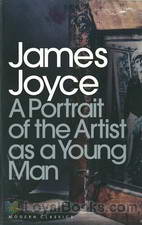 A Portrait of the Artist as a Young Man
A Portrait of the Artist as a Young Man
His family name is derived from a Greek craftsman who created the Labyrinth and designed wings for himself and his son to fly away from the island they were imprisoned in. But Stephen Dedalus, the young hero of James Joyce's first novel, is a young man who rises above his baser instincts and seeks a life devoted to the arts. This quintessential coming of age novel describes the early life of Stephen Dedalus. It is set in Ireland during the nineteenth century which was a time of emerging Irish nationalism and conservative Catholicism... | |
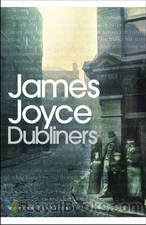 Dubliners
Dubliners
A young boy falls in love with his friend's much older sister and is desperate to get her the perfect gift from the Araby Fair. After a party, a man discovers something he had never known about his wife, which has a devastating impact on their marriage. An ambitious mother schemes to get her daughter a role in a series of concerts. A drunken legal clerk takes out his frustrations on his helpless young son. These and other brilliant stories are contained in the collection entitled Dubliners... | |
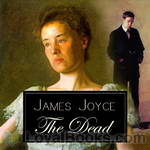 The Dead
The Dead
This novella is the final story in Joyce’s collection Dubliners. It describes a Christmas party given by Kate and Julia Morkan, two elderly Dublin ladies, that is attended by their nephew, Gabriel Conroy, and his wife. While the party is festive, full of dancing, drinking, and eating, it is also pervaded by political, religious, and sexual tensions, as well as memories of loss. When Gabriel and his wife go home at the end of the night, she reveals a long-kept secret that leads to an epiphany. | |
 Chamber Music
Chamber Music
Chamber Music is a collection of poems by James Joyce, first published in May of 1907. The collection originally comprised thirty-four love poems, but two further poems were added before publication (”All day I hear the noise of waters” and “I hear an army charging upon the land”). Although the poems did not sell well, they received some critical acclaim. Ezra Pound admired the “delicate temperament” of these early poems, while Yeats described “I hear an army charging upon the land” as “a technical and emotional masterpiece”... | |
By: Giovanni Boccaccio (1313-1375) | |
|---|---|
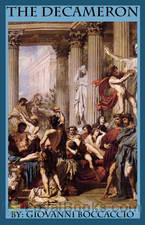 The Decameron
The Decameron
Giovanni Boccaccio’s The Decameron is a collection of novellas or short novels written during the 14th century. There are 100 tales contained in the book which is presented together. The book’s title The Decameron combines the two Greek words “deka” meaning ten and “hemera” meaning day. The title can be literally translated as “ten day,” which is also the time frame in which the stories are told by the 7 young women and 3 young men. In the book, each of the ten persons took their turns to tell stories for a day... | |
 La Fiammetta
La Fiammetta
| |